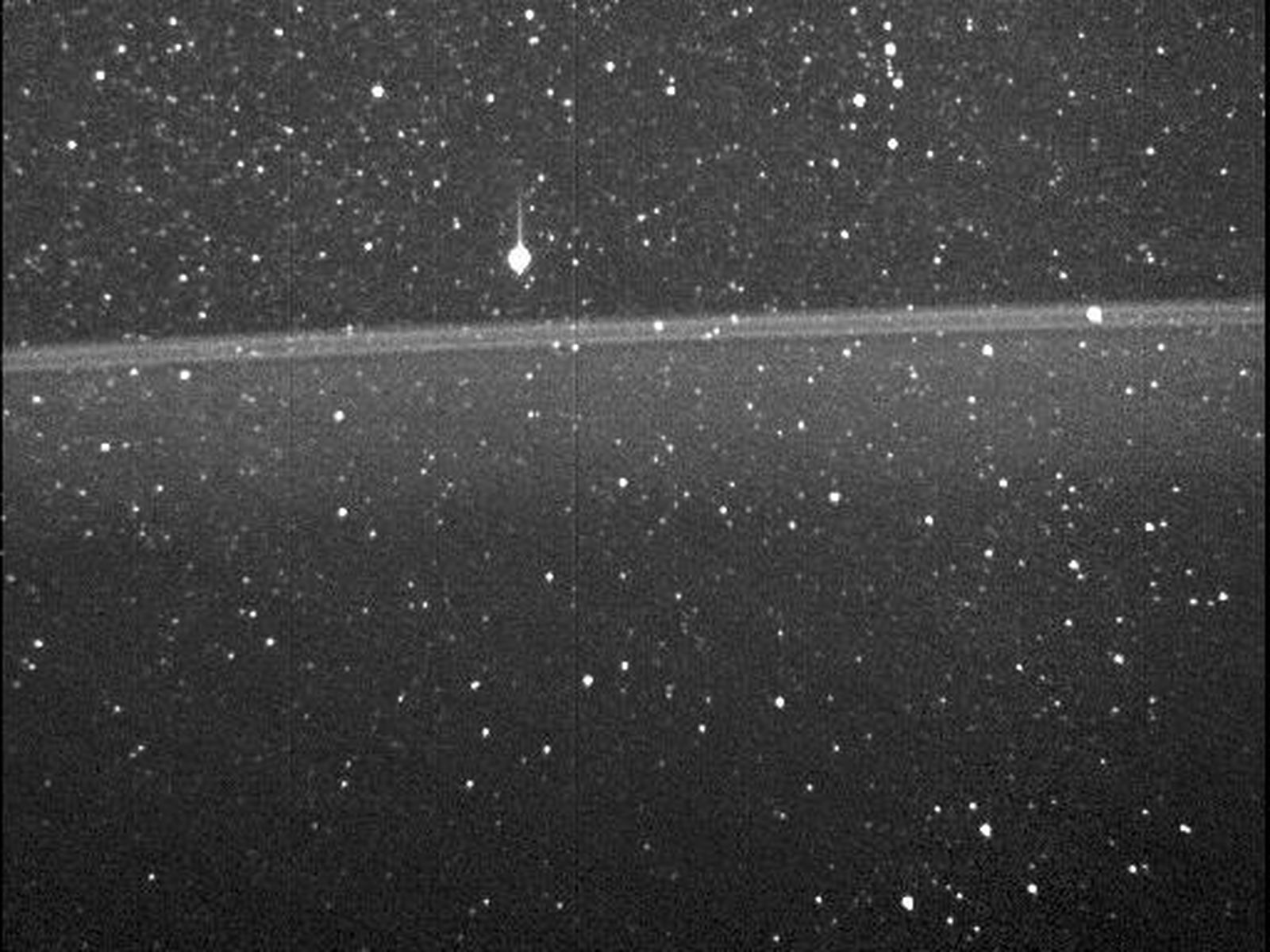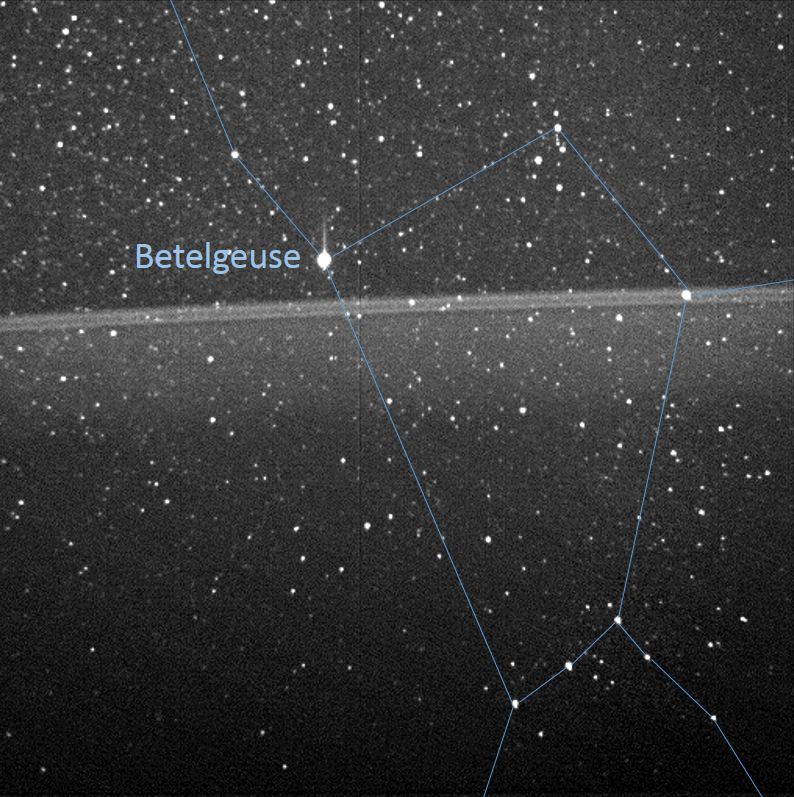Orbiting Jupiter
Did you know Jupiter has a ring structure? Can you measure radiation from a picture? What does Jovian lightning look like?
NASA’s latest probe to reach Jupiter, Juno, has taught us a lot about the solar system’s largest and oldest planet. Juno’s main mission was to report back about Jupiter’s interior, atmosphere, radiation strength and magnetosphere. But a navigation camera on board had a side quest—to return some unusual and surprising sights never seen before.
‘’We’re seeing Jupiter in a completely new way because we’re looking at the planet with new eyes—an ultra-sensitive engineering camera that was designed to detect dim stars. It’s incredibly exciting that Juno has been able to use an engineering camera to contribute to so many areas of science, and to capture the planet’s beauty. We’re erasing all boundaries between who or what can contribute to engineering, science, or art and I hope future missions will be inspired to do the same.’’
—Heidi Becker, Juno’s radiation monitoring investigation lead
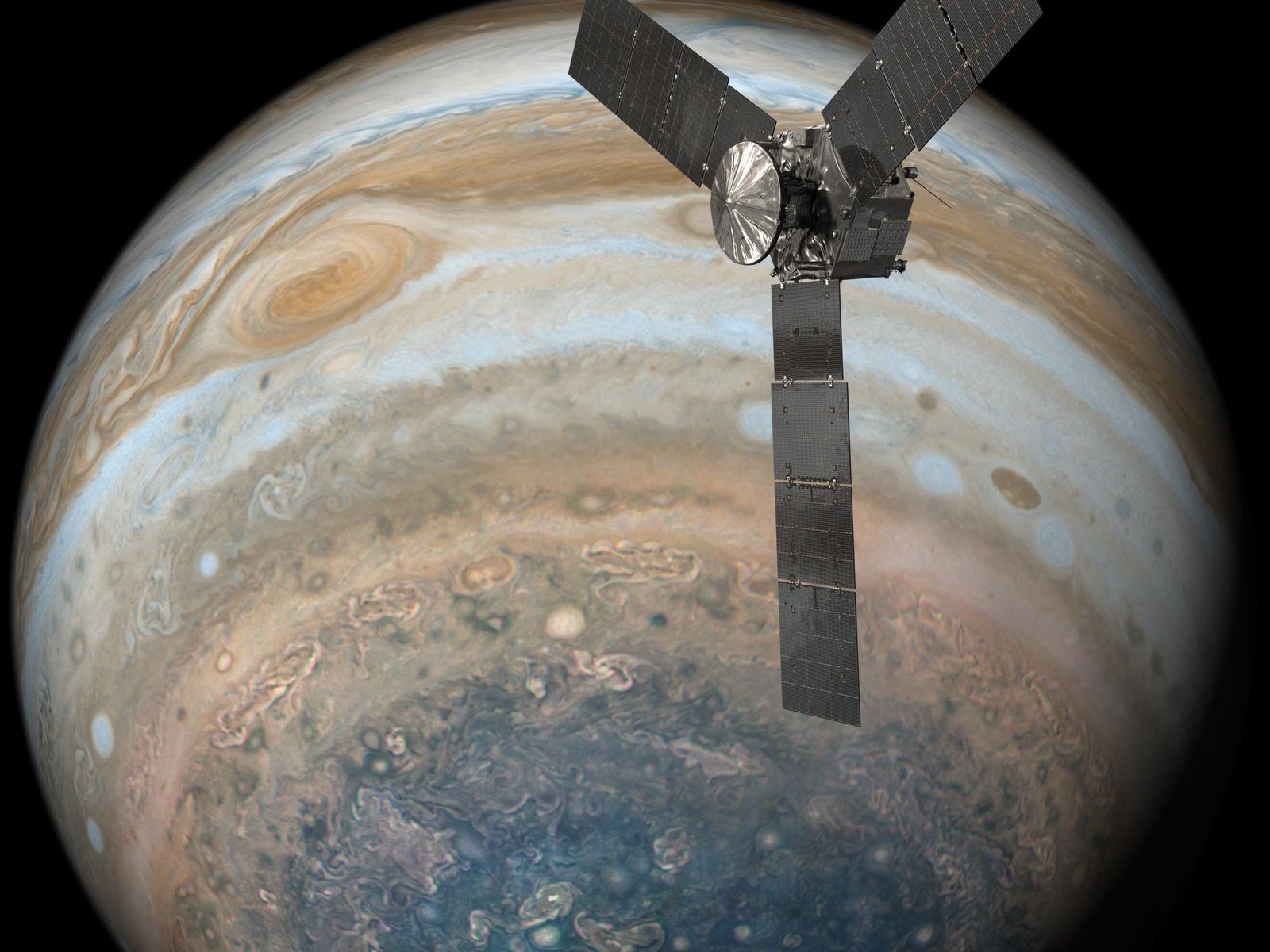
Inside the rings of Jupiter
Unlike the thick chunks of ice and rock that surround Saturn, Jupiter’s rings are faint and difficult to see because they are made up of small moon dust particles. Voyager 1 discovered Jupiter had rings back in 1979. Since then the Galileo probe, New Horizons probe and the Hubble Space Telescope have gathered more information and we now know that the rings are made up of four sections: halo, main, and two gossamer rings.
Juno is the latest spacecraft to visit Jupiter and observe the rings, only this time from a different angle. On 27 August 2016, Juno’s Stellar Reference Unit (SRU-1) star camera took the first image of Jupiter’s rings from the inside looking out.
The brightest blob above the ring’s band of light is Betelgeuse, a star that makes up part of the Orion constellation. Three bright stars in a line form Orion’s belt in the bottom right corner of the image.
Two years later, Juno’s SRU-1 star camera is still collecting data on Jupiter’s ring structure. The main ring curves into view and is half obscured by Jupiter’s giant shadow. If you look closely you can see parts of the halo ring to the left of the curve and the gossamer rings to the right.
The SRU images have a static quality because of Jupiter’s intense radiation. NASA’s Jet Propulsion Laboratory can use the graininess of each image to measure differences in radiation.
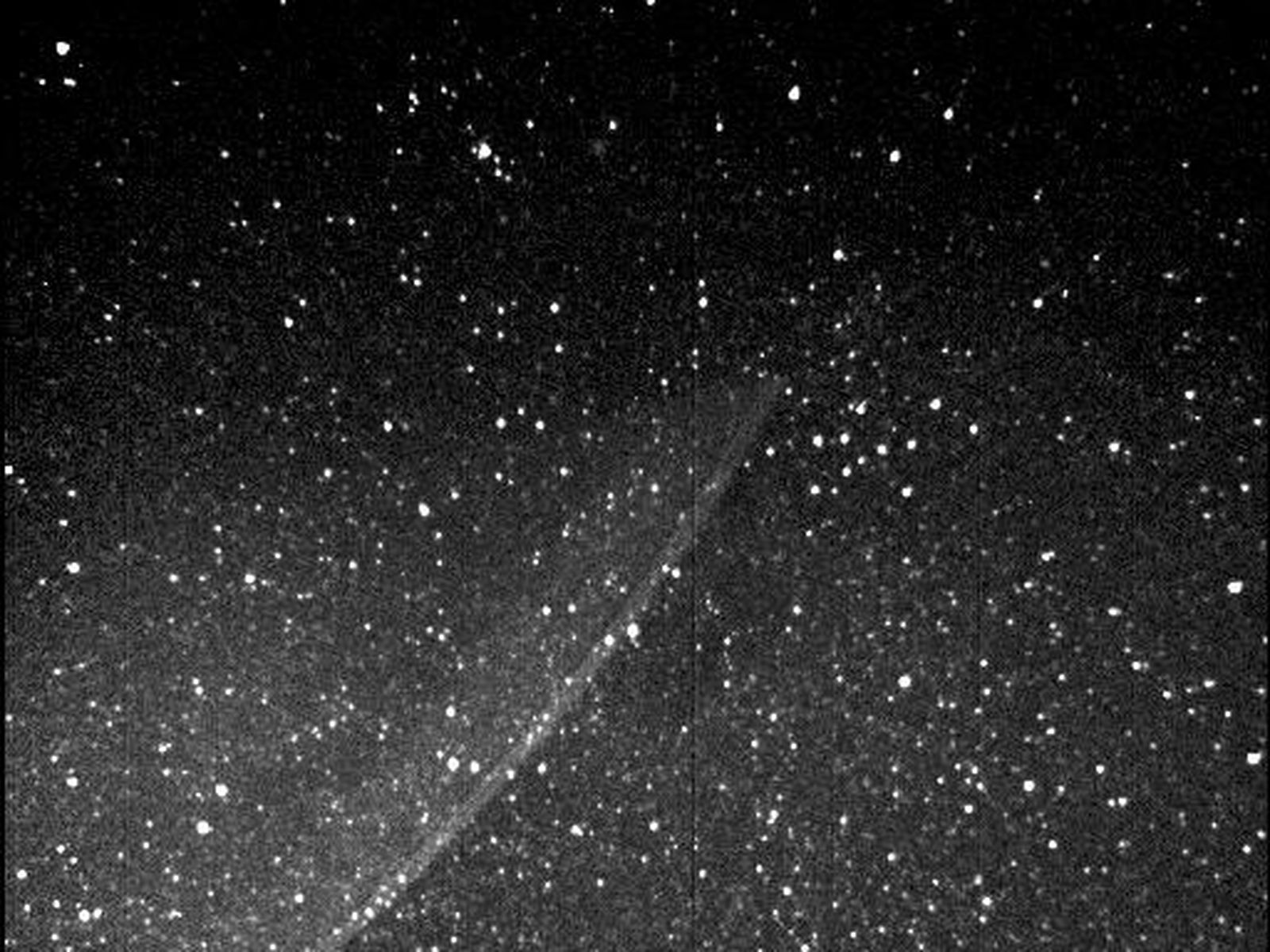
Charged skies
Auroras are natural light displays caused by high-energy particles colliding with a planet’s atmosphere close to a magnetic pole. Here on Earth, we sometimes refer to them as Northern or Southern Lights. But Earth isn’t the only planet to host these beautiful swirls of light, Jupiter and Saturn have enormous displays that are larger than our planet. The composite image below, made from Hubble observations, gives us the full picture and scale of Jupiter’s Northern Lights.

Juno returned the closest visible light images we have ever seen of Jupiter’s aurora. The probe captured the data on 24 May 2018 at 37,000 miles from Jupiter’s cloud tops (that’s a lot closer than the 238,855 miles between our Moon and Earth). The image below shows a part of the northern auroral oval, the white dots and lines are evidence of highly charged electrons piercing the camera. The largest bright spot in the bottom right corner is a streak of Jovian lightning.
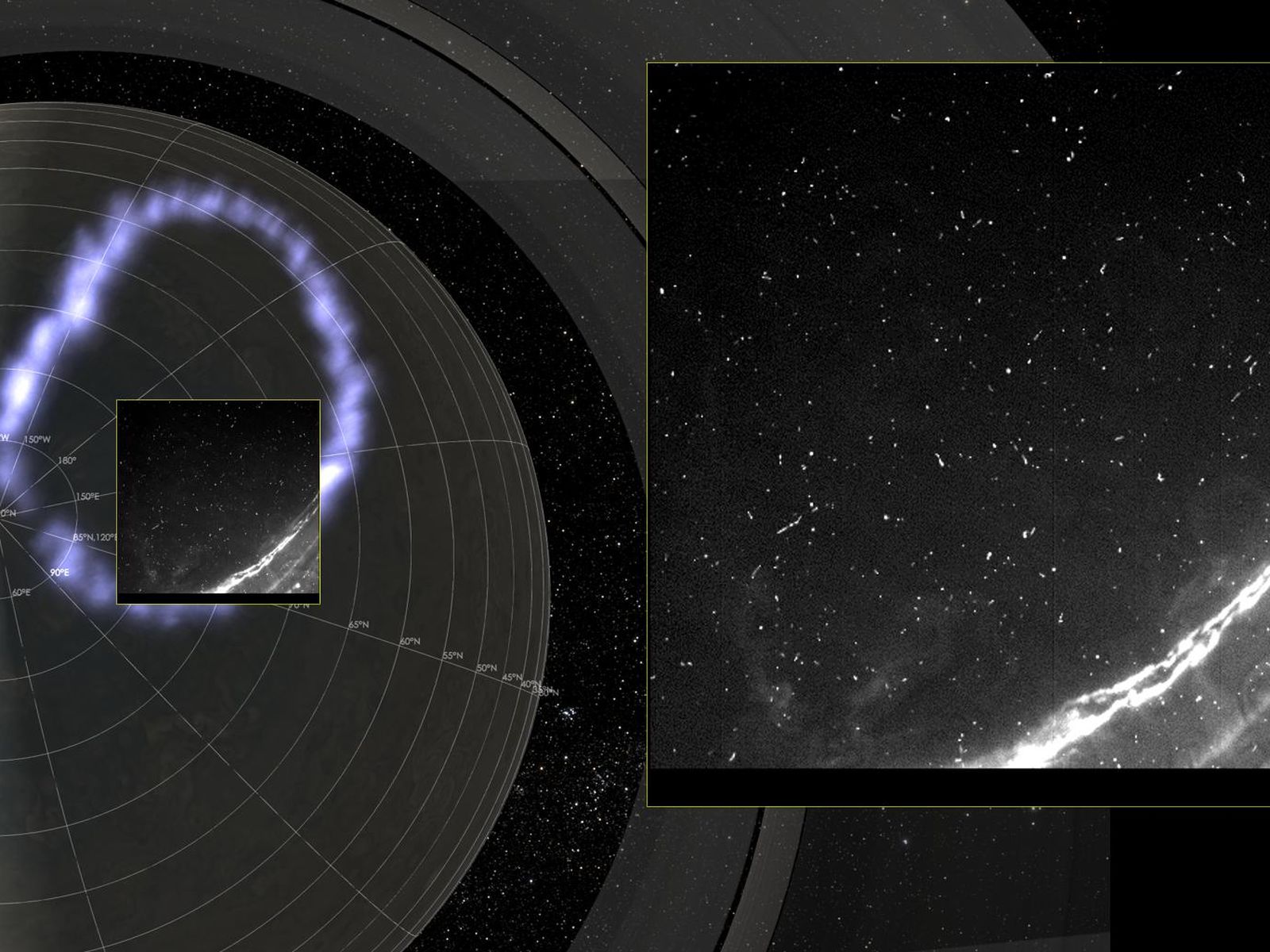
Jupiter’s dark side
Swirling Jovian clouds on the dark side of the planet are illuminated by one of Jupiter’s moons, Io. Flashes of lightning in the form of two bright spots strike above the clouds in this image taken by Juno on 7 February 2018.
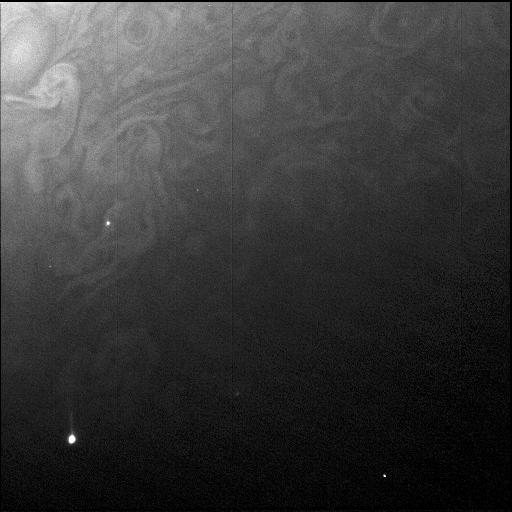
Mission almost complete
The SRU camera has given us a glimpse of Jupiter’s day-to-day beauty and fury. But Juno isn’t finished yet; it will continue orbiting and returning important data until the mission ends in 2021. The craft will then plunge into the planet’s volatile atmosphere in a controlled deorbit and disintegrate—mission complete.
For more information about the Juno mission:
Hello Universe, an exhibition about the sights and sounds of space, is open at the National Science and Media Museum until 22 January 2020.
